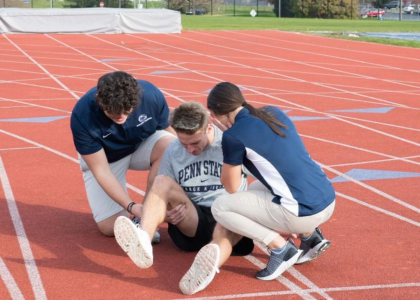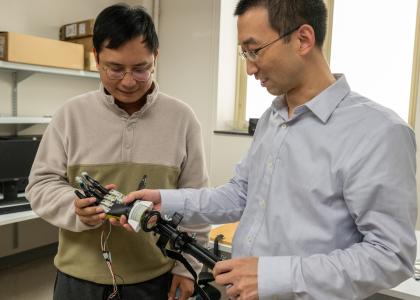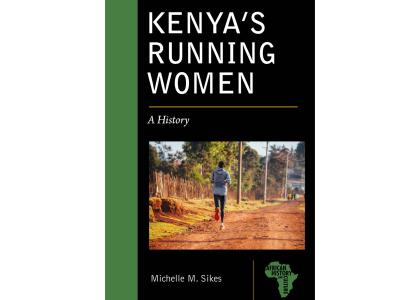Areas of Study
The Graduate Program in Kinesiology is organized around six interdisciplinary areas of study. Graduate students in kinesiology select one area of emphasis for their graduate work and are mentored by a faculty advisor who is a member of that study group. The six areas are:
Athletic Training and Sports Medicine
The Athletic Training Research Laboratory (ATRL) agenda focuses upon investigating the delivery of clinical health services to physically active individuals including the pathoetiology, prevention, assessment, and treatment of athletic, and orthopaedic health conditions. Specific themes of research include: the mechanical and functional instabilities of joints, clinical therapeutic modalities, health-related quality of life outcomes, athletic training education and sports injury epidemiology. Didactic coursework in athletic training and sports medicine is complemented by courses in biomechanics and locomotion studies, motor control, exercise physiology, and statistics and research design.
Biomechanics
Biomechanics is the study of the structure and function of biological systems by means of the methods of mechanics. Therefore biomechanics uses expertise from disciplines such as engineering, anatomy, aerospace, rehabilitation, medicine, orthopaedics, sport science, and many others. It studies animal, human, and plant structure and motion.
Major research thrusts include the application of biomechanical principles to motor control and neurological problems, understanding how muscle properties dictate the coordination of movement, exploring the mechanical behavior of musculoskeletal structures at the tissue level, and exploring innovative solutions to orthopaedic problems.
Exercise Physiology
Exercise physiology is the study of the body's systems during acute and chronic exercise .Faculty study function and adaptation to acute and chronic exercise and environmental stresses across the lifespan. Research areas include aging, cardiovascular disease, muscle growth and atrophy, bone health and reproductive function. Our multidisciplinary approach to health and the biology of physical activity utilizes methods ranging from molecular and cellular to human integrative biology.
History and Philosophy of Sport
The History and Philosophy of Sport program focuses on the ethical, philosophical, historical, and cultural dynamics that shape sport and physical activity. Scholars in this area examine how these physical practices intersect with cultural, social, racial, gender, and political dimensions of human experience in order to understand the role sport and physical exercise play and should play in human life. Our approaches to these practices are grounded in contemporary philosophical and historical methods and theories and seek to advance knowledge not only within the domains of philosophy and history but between and across those two fields. We also seek to link insights between our area and the other social science and scientific domains that flourish in our multi-disciplinary Department of Kinesiology.
Motor Control
Motor Control faculty examine the cognitive, neurophysiological, and biomechanical foundations of voluntary movements and postural control. Patients with neurological disorders, including stroke, Parkinson’s Disease, and specific neuropathies are also examined in order to better understand the neural foundations of basic motor control mechanisms, and in order to understand motor dysfunction and recovery of function. Intervention research addresses the facilitation of motor recovery following nervous system injury. Experimental methods include but are not limited to movement tracking and kinematic analysis, biomechanical analyses, electromyography, brain electrophysiology and imaging, movement and control based simulations.
Psychology of Physical Activity
Research themes include: developing, evaluating, and optimizing physical activity interventions; psychobehavioral determinants and outcomes; physical activity, public health and health disparities; group dynamics; and neuropsychological aspects of traumatic brain injury in sport. We often leave the lab to study personal and community environments, with innovative research employing personal devices to study health behavior.



